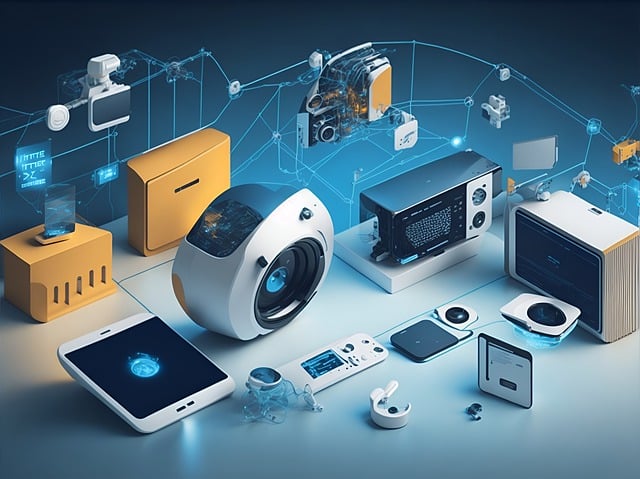By ATS Staff - October 9th, 2017
Latest Technologies
The Internet of Things (IoT) refers to the network of interconnected devices that communicate and exchange data with each other over the internet. These devices can range from everyday household items like refrigerators and lightbulbs to complex industrial machinery. IoT enables these devices to collect, share, and act on information, often without direct human intervention.
In recent years, IoT has gained widespread attention due to its potential to revolutionize multiple industries, improve efficiency, and enhance daily life. Below, we explore the essence of IoT, its applications, challenges, and future prospects.
Key Components of IoT
At its core, IoT involves several critical components that work together:
- Sensors and Devices: These capture data from their environment. Sensors in smartwatches, for instance, monitor heart rates and step counts, while industrial sensors track machine performance and environmental conditions.
- Connectivity: Once the data is collected, it needs to be transmitted to a centralized system. IoT devices use various communication protocols (Wi-Fi, Bluetooth, 5G, etc.) to send information to the cloud or other devices.
- Data Processing: Collected data is then processed, either locally (at the device level) or in the cloud. This processing helps transform raw data into actionable insights.
- User Interface: The information is presented to users via applications, dashboards, or automated actions. For instance, a smart thermostat adjusts room temperatures based on user preferences or weather conditions.
Applications of IoT
The versatility of IoT allows it to be applied across diverse sectors:
1. Smart Homes
IoT has transformed the concept of home automation, allowing users to control lighting, security systems, appliances, and heating/cooling systems remotely. Devices like smart speakers, thermostats, and home security cameras are becoming integral to modern homes.
2. Healthcare (IoT in Healthcare)
Wearables like fitness trackers and smartwatches monitor vitals such as heart rate, sleep patterns, and physical activity. Hospitals use IoT-enabled medical devices to track patient health in real-time, reduce errors, and optimize care.
3. Industrial IoT (IIoT)
IoT is widely used in industries for monitoring equipment, predictive maintenance, and streamlining operations. By analyzing data from machinery, businesses can reduce downtime, prevent breakdowns, and increase operational efficiency.
4. Smart Cities
Cities worldwide are leveraging IoT to improve infrastructure and services. Smart traffic management, waste collection systems, and energy-efficient buildings are part of IoT-enabled urban development. IoT sensors in public transportation, for example, can provide real-time information to commuters and optimize routes for traffic reduction.
5. Agriculture
Farmers are increasingly adopting IoT to monitor soil conditions, track livestock, and automate irrigation systems. By leveraging IoT, agricultural productivity improves, and resource use is optimized.
Challenges Facing IoT
While IoT offers vast potential, several challenges need to be addressed to ensure its full adoption:
1. Security
As more devices are connected to the internet, the risk of cyberattacks increases. IoT devices, especially consumer-grade ones, are often vulnerable due to weak security protocols. Ensuring that devices and networks are secure from threats is a growing concern.
2. Data Privacy
IoT devices collect massive amounts of data, much of it personal. How this data is stored, used, and shared raises privacy issues. There needs to be greater transparency and regulation to protect users' personal information.
3. Interoperability
IoT devices often come from different manufacturers and use various communication protocols. Ensuring that these devices work together seamlessly is a major challenge. The lack of standardization can hinder the scalability of IoT solutions.
4. Power Consumption
Many IoT devices rely on batteries, which can limit their functionality over time. Finding ways to reduce power consumption or develop more efficient energy sources is crucial for expanding IoT’s potential.
The Future of IoT
The future of IoT is filled with possibilities. As technology continues to evolve, several trends are likely to shape the IoT landscape:
- Edge Computing: With edge computing, data is processed closer to where it is generated rather than relying solely on the cloud. This reduces latency, enhances security, and can be more cost-effective for industries requiring real-time decision-making.
- Artificial Intelligence and Machine Learning Integration: AI and ML are being integrated with IoT to enable more intelligent and predictive systems. From self-driving cars to smarter industrial systems, these technologies will enable IoT to become more autonomous and efficient.
- 5G Networks: The rollout of 5G networks will enhance IoT by providing faster speeds, lower latency, and greater capacity. This will unlock new possibilities, such as more advanced smart city projects and remote medical procedures through connected devices.
- Sustainability: IoT has the potential to play a significant role in promoting sustainability. By optimizing resource use in agriculture, manufacturing, and energy consumption, IoT can contribute to reducing carbon footprints and supporting environmental conservation efforts.
Conclusion
The Internet of Things is more than just a technological trend; it is a transformative force reshaping the world as we know it. From homes and industries to healthcare and cities, IoT is enabling smarter, more efficient systems that enhance quality of life, optimize operations, and reduce environmental impact. However, addressing security, privacy, and interoperability challenges is critical to ensure its safe and widespread adoption.
As the technology matures, IoT’s impact will continue to grow, unlocking new opportunities for innovation and changing the way we interact with the world around us.
Popular Categories
Agile 2 Android 2 Artificial Intelligence 47 Blockchain 2 Cloud Storage 3 Code Editors 2 Computer Languages 11 Cybersecurity 8 Data Science 13 Database 5 Digital Marketing 3 Ecommerce 3 Email Server 2 Finance 2 Google 3 HTML-CSS 2 Industries 6 Infrastructure 2 iOS 2 Javascript 5 Latest Technologies 41 Linux 5 LLMs 11 Machine Learning 32 Mobile 3 MySQL 2 Operating Systems 3 PHP 2 Project Management 3 Python Programming 24 SEO - AEO 5 Software Development 40 Software Testing 3 Web Server 6 Work Ethics 2